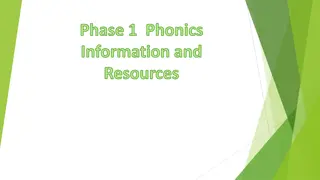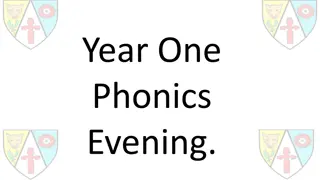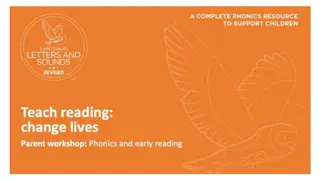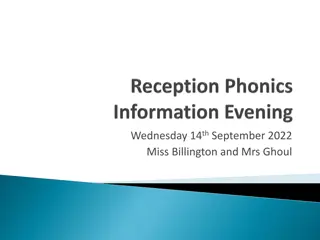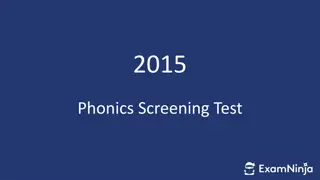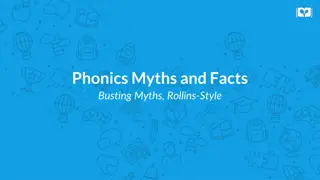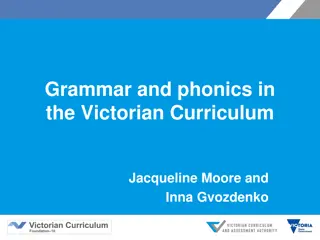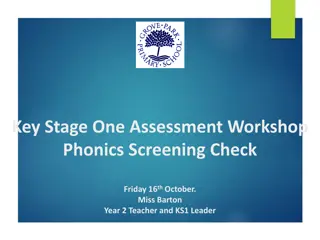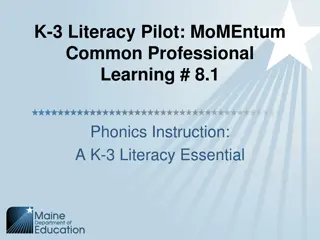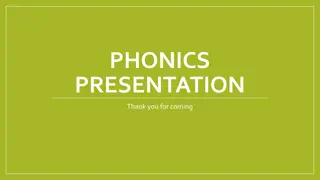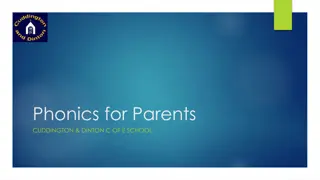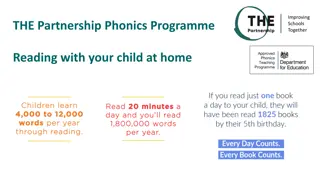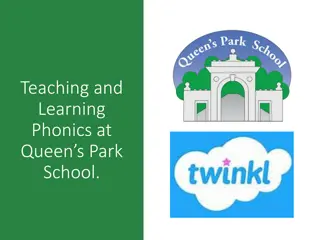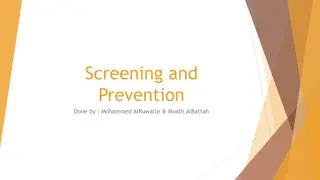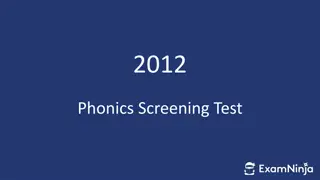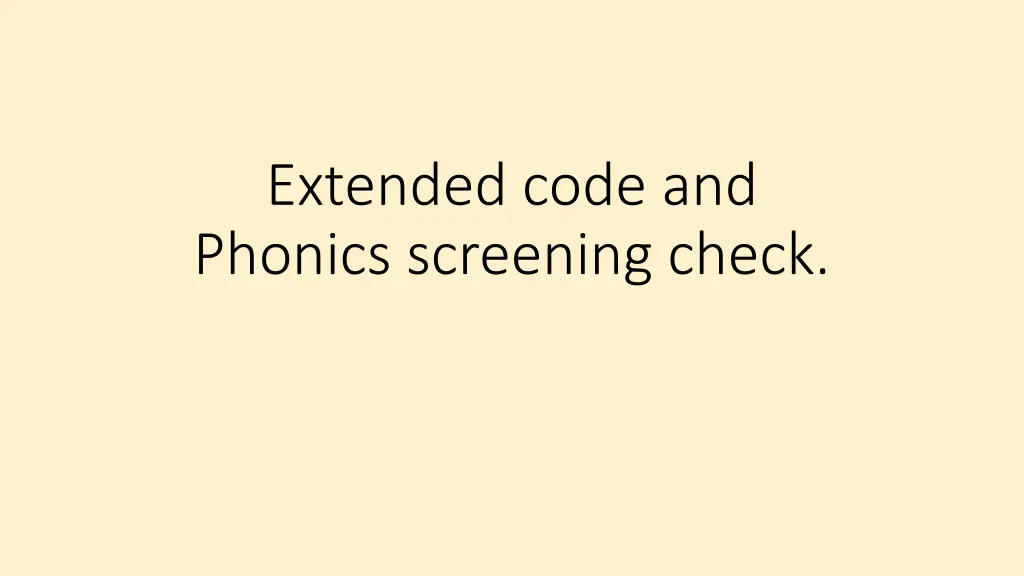
Decoding Skills and Phonics Concepts for Effective Reading Instruction
Enhance children's reading skills with decoding strategies and phonics concepts including blending, segmenting, and phoneme manipulation. Explore the systematic and structured approach of phonics instruction for a strong foundation in literacy. Dive into letter-sound relationships and phonics language elements to support effective reading development.
Download Presentation

Please find below an Image/Link to download the presentation.
The content on the website is provided AS IS for your information and personal use only. It may not be sold, licensed, or shared on other websites without obtaining consent from the author. If you encounter any issues during the download, it is possible that the publisher has removed the file from their server.
You are allowed to download the files provided on this website for personal or commercial use, subject to the condition that they are used lawfully. All files are the property of their respective owners.
The content on the website is provided AS IS for your information and personal use only. It may not be sold, licensed, or shared on other websites without obtaining consent from the author.
E N D
Presentation Transcript
Extended code and Phonics screening check.
Bury School reading scheme works alongside..
* Instructional Method * Start in Foundation * Systematic, structured, cumulative and sequential * Explicit code-orientated programme * DfE validation
Phonics concepts Phonics concepts * Letters are symbols that represent sound * Sounds can be spelled using 1,2,3 or 4 letters (a ay igh eigh) * The same sound can be spelled in different ways * The same spelling can represent different sounds (wind, lead)
Phonic skills Blending Segmenting Phoneme manipulation (ability to modify, change, or move the individual ability to modify, change, or move the individual sounds in a word sounds in a word.)
Using these in practice. The children are expected to add their decoding skills to read the words. For example: high grapheme and a trigraph rain grapheme, digraph, grapheme phone digraph, split digraph, grapheme fear grapheme, trigraph
Phonics language All the other letters are consonants Vowels are aeiou Graphemes when written, phoneme when said a single sound button a, b, c Digraphs - two letters together, that make a single sound ai ck or zip Trigraphs three letters that make a single sound igh ear air zip Tetragraphs four letters that make a single sound ough eigh zip Split digraphs - two vowels that make a single sound, but are split by a consonant. a-e e-e i-e o-e u-e smile
Phase 1 Phase 1 Developing children s listening skills Developing children s listening skills The initial code: The initial code: Practise all 3 key skills whilst learning the 1:1 sound spelling Practise all 3 key skills whilst learning the 1:1 sound spelling correspondences and securing their understanding of blending. correspondences and securing their understanding of blending. Builds skills to decode ( Builds skills to decode (Decoding is the ability to apply your knowledge of letter-sound relationships, including knowledge of letter patterns, to correctly pronounce written words) Build skills to encode ( Build skills to encode (using individual sounds to build and write words)
Extended code Year 1 ai family includes ay a ey a-e ea ar family includes al a ee family includes ie e ea ey e-e y ou family includes ow oy family includes oi oo family includes ue ew u-e u oa family includes oe o-e ow o or family includes au ore aw augh ough our oor ur family includes ir er or ear igh family includes i-e ie y i This list is not exhaustive, just an example of the sounds the children learn.
Information about the Phonics Screening Check Starts the week commencing 9thJune 2025. The children have as long as they need. On a 1:1 basis in a quiet place. They are allowed to write on the sheet to help them decode. There are 20 real words and 20 nonsense words. Nonsense words have an alien next to them. There are no clues, no reading round the word or using the picture. They simply have to use their phonic knowledge. Previous years, the pass mark has been around 33/40 If they don t pass, they retake in year 2.
Real and nonsense words There are 20 real words, starting with a few sounds, getting longer and more complex. (eg Phonics screening 2013) thin cheek moist toy fuel strike reaching There are 20 nonsense words, marked by an alien each time, again starting with a few sounds and getting longer and more complex. elp veen voisk herks zale strabe
Top tips to help 1. Your child needs to read their school reading book every day, for at least 10 minutes day, for at least 10 minutes. every 2. Your child need to practise their spellings every day. I know these are a challenge to the children. Little and often will help. Look, cover, write and check method. The spellings mirror the sounds currently being taught in school. 3. Continue to read and enjoy other books with your child, including higher level books that you will read to them.
The biggest tips! Slow down. Say the sounds and read the word.




